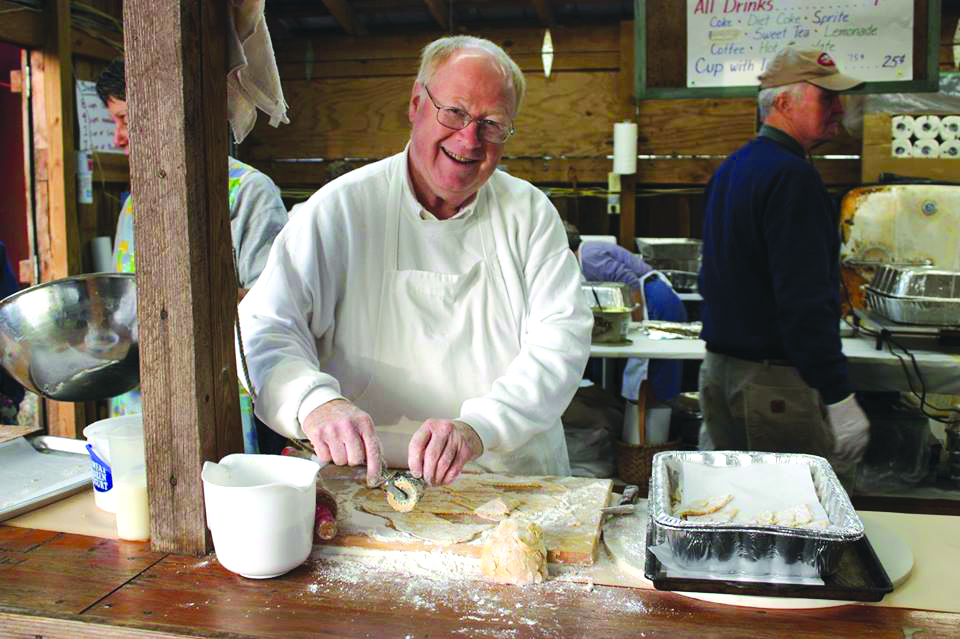Special to the
Opelika Observer
The 48th Pioneer Day at Loachapoka on Oct. 19 is all about making and soppin’ syrup. In 19th century Alabama, when the cotton was harvested and there was a slight chill in the air, it was syrup-making time.
Farmers usually came together to squeeze the sugarcane or sorghum into juice and slowly cook the juice until it became thick, dark syrup. All the sharecroppers and farmers that worked took home a few buckets of the sweet syrup to use throughout the year. It may have been the only sweetener they could afford. As tradition dictates, the Lee County Historical Society will have mules or horses demonstrating.the old-fashioned method of making syrup. Visitors may even try their hand at harvesting cane in Pioneer Park’s Crops Garden, and the kids can play mule and turn another syrup mill to make sugarcane juice lemonade.
If one would like to take home some real sugarcane or sorghum syrup, it will be available. The Lee County Historical Society has teamed up with Todd Syrup Farms of Headland to provide visitors to Pioneer Day with real, homemade Alabama ribbon-cane syrup. The Todd family has been making syrup from sugarcane since the early 1800s. They spend all year nurturing their patch of beautiful green sugar cane.
In the fall, the cane is stripped (removing the leaves) and topped, then carefully cut down. After running through a roller press mill, the extracted juice is filtered and cooked into delicious golden syrup. It takes about 10 gallons of sugarcane juice to make one gallon of Pioneer Day syrup. Pioneer Day syrup made by Todd Syrup Farms will be available on both sides of Highway 14 on Pioneer Day at Loachapoka.
If someone grew up north of Birmingham where sugarcane doesn’t grow as well, then folks traditionally planted sorghum for syrup. Sorghum is an annual but will produce a stalk with juice not quite as sweet as sugarcane juice but suitable for making syrup. Sorghum syrup has a few more tannins and is a little darker and stronger tasting than sugarcane syrup. Pioneer Day organizers will have plenty of sorghum syrup as well.
Visitors may sign up to purchase a jar of the syrup made on-site. However, most visitors do not realize the skill and effort that goes into making really good syrup. Unlike the syrup they get from Todd Syrup Farm, the quality of the syrup made under the conditions at Pioneer Day can vary from year to year just like it did 150 years ago. Some folks are disappointed when their locally made syrup turns to sugar. This is exactly what pioneers experienced. That’s why it is called “sugar” cane. Most processed syrups have corn solids added to prevent this granulation that can occur in homemade and untreated syrup. However, a few sugar crystals do not distract from its goodness. Just heat it up a bit and the sugar crystals will disappear.
There are lots of other activities, vendors, entertainment and historical demonstrations on Pioneer Day. Be sure to come out and sop some sweet potato biscuits in that good, old-time syrup.

